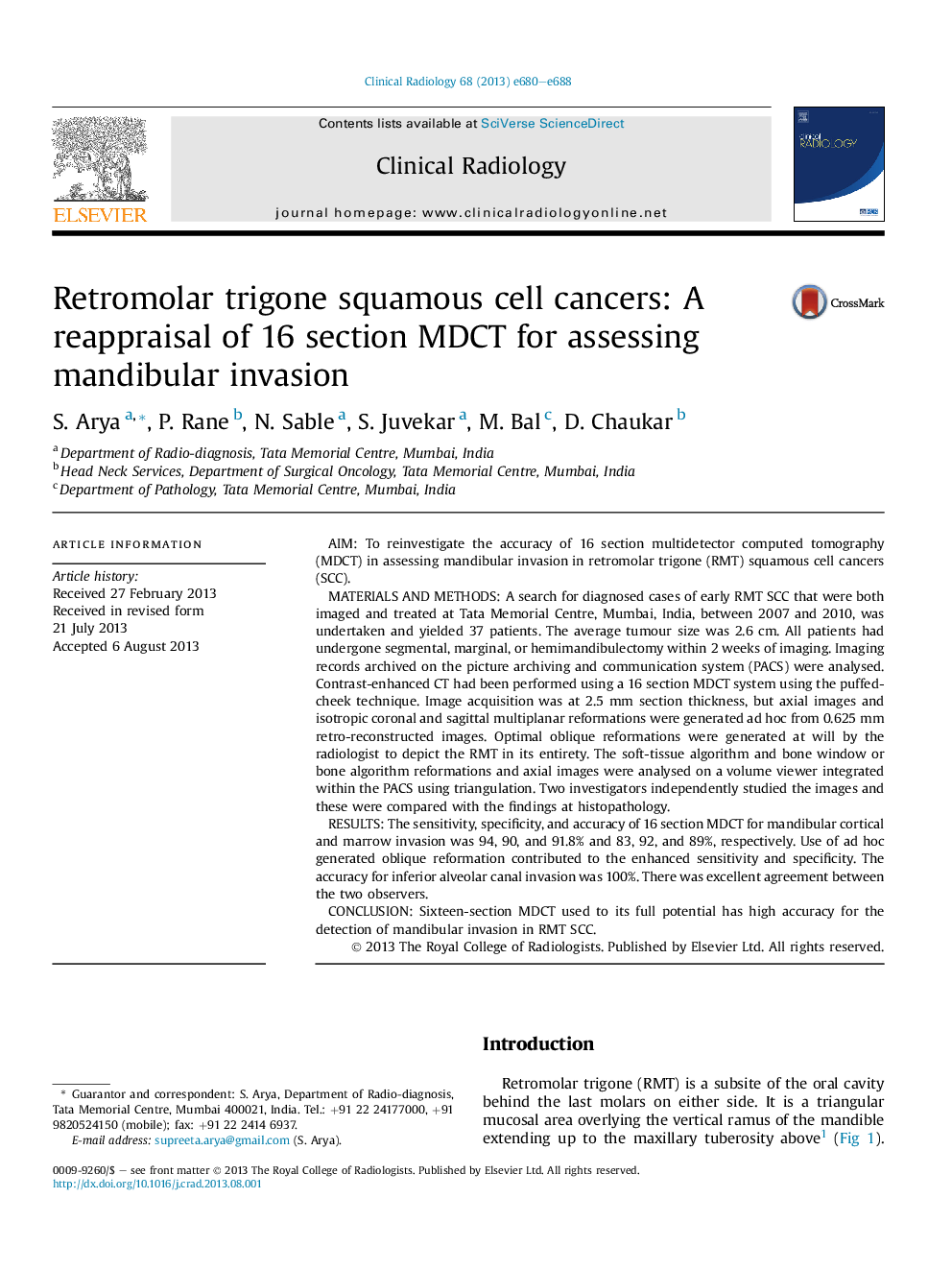| Article ID | Journal | Published Year | Pages | File Type |
|---|---|---|---|---|
| 3982378 | Clinical Radiology | 2013 | 9 Pages |
AimTo reinvestigate the accuracy of 16 section multidetector computed tomography (MDCT) in assessing mandibular invasion in retromolar trigone (RMT) squamous cell cancers (SCC).Materials and methodsA search for diagnosed cases of early RMT SCC that were both imaged and treated at Tata Memorial Centre, Mumbai, India, between 2007 and 2010, was undertaken and yielded 37 patients. The average tumour size was 2.6 cm. All patients had undergone segmental, marginal, or hemimandibulectomy within 2 weeks of imaging. Imaging records archived on the picture archiving and communication system (PACS) were analysed. Contrast-enhanced CT had been performed using a 16 section MDCT system using the puffed-cheek technique. Image acquisition was at 2.5 mm section thickness, but axial images and isotropic coronal and sagittal multiplanar reformations were generated ad hoc from 0.625 mm retro-reconstructed images. Optimal oblique reformations were generated at will by the radiologist to depict the RMT in its entirety. The soft-tissue algorithm and bone window or bone algorithm reformations and axial images were analysed on a volume viewer integrated within the PACS using triangulation. Two investigators independently studied the images and these were compared with the findings at histopathology.ResultsThe sensitivity, specificity, and accuracy of 16 section MDCT for mandibular cortical and marrow invasion was 94, 90, and 91.8% and 83, 92, and 89%, respectively. Use of ad hoc generated oblique reformation contributed to the enhanced sensitivity and specificity. The accuracy for inferior alveolar canal invasion was 100%. There was excellent agreement between the two observers.ConclusionSixteen-section MDCT used to its full potential has high accuracy for the detection of mandibular invasion in RMT SCC.
